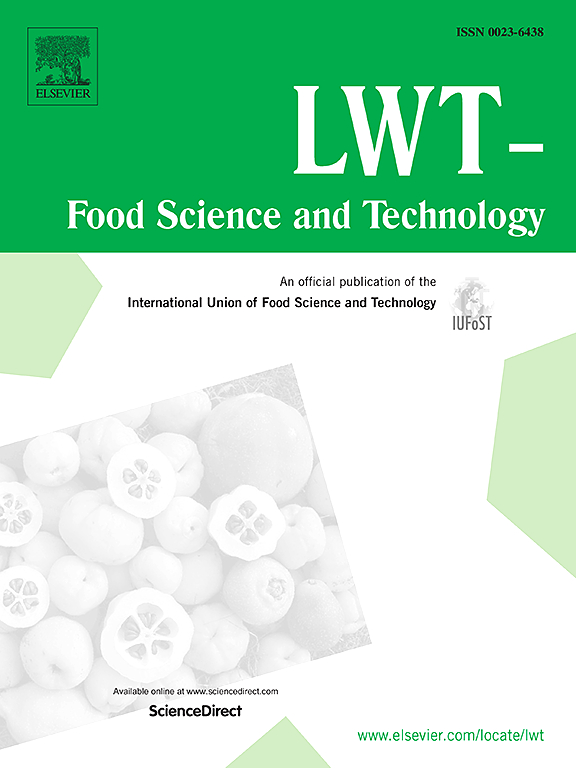Preparation of sunflower wax-based oleofoams and its application in inflatable reduced-fat mayonnaise
IF 6.6
1区 农林科学
Q1 FOOD SCIENCE & TECHNOLOGY
引用次数: 0
Abstract
The present work aimed to prepare inflatable reduced-fat mayonnaise by using sunflower wax-based oleofoams (SWOF) as an oil phase. The effects of SW concentrations on the microstructure and the physical properties of oleofoams were investigated. Then the stable oleofoam formulations were chosen to prepare inflatable mayonnaise, and the functionality related to the physical (textural properties and thermal stability) and sensory attributes (appearance, color, and viscosity) of inflatable reduced-fat mayonnaise was compared with commercial low-fat mayonnaise (CLFM) & full-fat mayonnaise (CFFM). The microstructure study of SWOF indicated the presence of clearly visible SW crystals at the air-oil boundary and inside the continuous phase. This suggests that the stability of SWOF was accomplished through both Pickering and network crystallization. The SWOF exhibited a multi-layered sandwich structure, and the crystal layer thickness increased in oleofoams as the SW concentration rose. The oleofoams containing exceeded 6 wt% SW had better foamability and stability, a more elastic network, and a clear surface texture. Inflatable mayonnaise prepared by 10SWOF had comparable brightness, mouthfeel, and texture to CLFM, but sensitized to temperature. In general, the whipped mayonnaise prepared in this investigation had an acceptable appearance and textural properties and was suitable for foods that do not require heating.

葵花蜡基油脂泡沫的制备及其在充气式减脂蛋黄酱中的应用
本研究旨在使用向日葵蜡基油脂泡沫(SWOF)作为油相,制备可充气的减脂蛋黄酱。研究了葵花蜡浓度对油脂泡沫微观结构和物理性质的影响。然后选择稳定的油脂泡沫配方制备充气蛋黄酱,并将充气减脂蛋黄酱的物理(质地特性和热稳定性)和感官属性(外观、颜色和粘度)相关功能与商用低脂蛋黄酱(CLFM)和amp; 全脂蛋黄酱(CFFM)进行比较。对 SWOF 的微观结构研究表明,在油气边界和连续相内部存在清晰可见的 SW 晶体。这表明,SWOF 的稳定性是通过皮克林结晶和网络结晶实现的。SWOF 呈多层夹层结构,随着 SW 浓度的增加,油膏中的晶体层厚度也在增加。SW 含量超过 6 wt% 的油脂泡沫具有更好的发泡性和稳定性、更有弹性的网络和清晰的表面纹理。用 10SWOF 制备的膨化蛋黄酱的亮度、口感和质地与 CLFM 相当,但对温度敏感。总的来说,这项研究制备的打发蛋黄酱具有可接受的外观和质地特性,适合用于无需加热的食品。
本文章由计算机程序翻译,如有差异,请以英文原文为准。
求助全文
约1分钟内获得全文
求助全文
来源期刊

LWT - Food Science and Technology
工程技术-食品科技
CiteScore
11.80
自引率
6.70%
发文量
1724
审稿时长
65 days
期刊介绍:
LWT - Food Science and Technology is an international journal that publishes innovative papers in the fields of food chemistry, biochemistry, microbiology, technology and nutrition. The work described should be innovative either in the approach or in the methods used. The significance of the results either for the science community or for the food industry must also be specified. Contributions written in English are welcomed in the form of review articles, short reviews, research papers, and research notes. Papers featuring animal trials and cell cultures are outside the scope of the journal and will not be considered for publication.
 求助内容:
求助内容: 应助结果提醒方式:
应助结果提醒方式:


